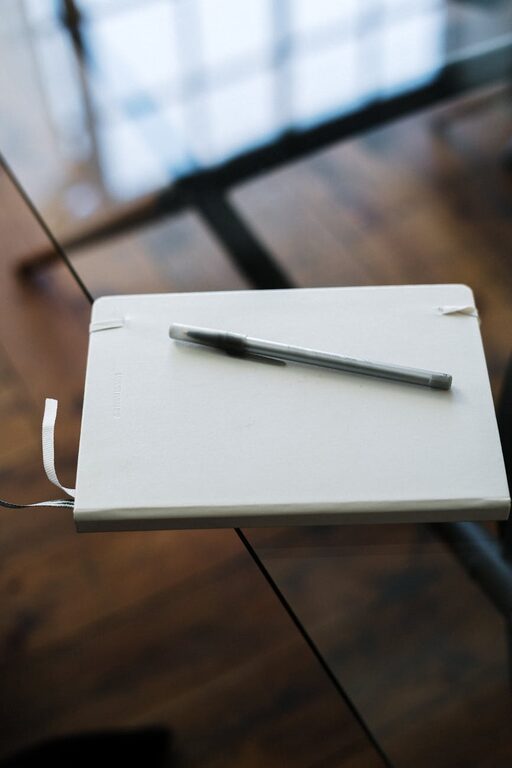Choosing the perfect notebook can feel surprisingly challenging. With countless options available—different sizes, paper types, covers, and layouts—it’s easy to feel overwhelmed. Yet, finding a notebook you’ll genuinely enjoy using can make a world of difference in your productivity, creativity, and organization. Whether you’re a student, professional, artist, or someone who loves to journal, selecting the right notebook helps you build a lasting writing habit.
In this guide, we’ll explore practical tips to help you choose a notebook you’ll actually use regularly. Let’s dive in!
Understand Your Purpose
Before you buy any notebook, start by asking yourself: what will I use this for?
– Journaling: Do you want a place to reflect on your day, track moods, or explore ideas?
– Note-taking: Will it be for meetings, classes, or general information?
– Sketching or doodling: Are you looking for blank pages or specialized drawing paper?
– Planning and organization: Do you prefer a structured layout with calendars, to-do lists, or bullet journal style?
– Creative writing: Would lined pages help keep your handwriting neat?
Getting clear on your primary use can guide your choice in format, size, and layout.
Consider Size and Portability
The size of your notebook affects where and how often you’ll use it.
– Pocket-sized notebooks (3”x5” or similar) are easy to carry but offer limited writing space.
– A5 notebooks (about 5.8”x8.3”) strike a good balance between portability and usability and are very popular.
– A4 notebooks (8.3”x11.7”) provide ample space but can be bulky to carry around.
Think about your daily routine. If you plan to carry your notebook with you, a smaller, lightweight option is wise. If you mostly use it at home or work, a larger notebook might be more comfortable.
Choose the Right Paper Type and Weight
Paper quality affects your writing experience and what kinds of pens or pencils you can use.
– Lined paper helps keep notes neat and organized.
– Blank pages offer more freedom for drawing, mind-mapping, or messy brainstorming.
– Dot grid paper has tiny dots that provide subtle structure without interference, which is great for bullet journaling.
– Grid paper is commonly used for technical sketches or precise drawings.
Also, pay attention to paper weight measured in grams per square meter (gsm). Higher gsm (80-120 gsm or more) means thicker paper that prevents bleeding and is more durable. If you use fountain pens or markers, thicker paper matters more.
Decide on Binding Style
How your notebook is bound can impact durability and usability.
– Spiral-bound notebooks lie flat and allow you to fold the cover back. Great for writing on the go but spiral rings might get damaged.
– Perfect bound (like paperback books) provide a clean look but might not open fully flat.
– Hardcover notebooks often have sewn bindings and tend to be more durable.
– Softcover notebooks are lighter and more flexible but might wear out faster.
If you value being able to write comfortably without holding open the notebook, spiral or sewn bindings tend to be better.
Cover Material and Design
The cover protects your pages and reflects your style.
– Leather or faux leather covers feel luxurious and are very durable.
– Cardstock or cardboard covers are lightweight and affordable but less sturdy.
– Fabric-covered or eco-friendly materials offer unique textures and environmental benefits.
Think about where you will use the notebook and how rough the conditions might be. If you’re tossing it in a bag daily, a sturdy cover can prevent damage.
Extra Features to Look For
Some additional features can enhance your user experience:
– Built-in bookmarks help you quickly find your place.
– Elastic closures keep your notebook securely shut.
– Expandable inner pockets are handy for storing notes or receipts.
– Numbered pages and an index are particularly useful for bullet journaling or detailed notes.
– Pre-printed layouts such as calendars, habit trackers, or to-do lists can save setup time.
Consider which features matter most to you.
Set a Realistic Budget
Notebooks come in a wide price range—from a dollar store spiral notebook to premium, artisan-crafted journals. Think about how much you’re willing to invest.
If you’re just starting a journaling or note-taking habit, a mid-range option ($10-$20) often strikes a good balance between quality and affordability. As your needs evolve, you can explore more personalized or specialized notebooks.
Test Before You Commit
Whenever possible, try before you buy. Feel the paper texture, open the notebook to check if it lies flat, or write a few lines to test the ink bleed-through. If you shop online, read reviews and check return policies.
Sometimes local stationery shops or bookstores will let you flip through sample notebooks. This small step can save you from ending up with a notebook that doesn’t feel right.
Tips to Make Your Notebook a Habit
Choosing a great notebook is only half the battle. To ensure you actually use it, try these tips:
– Keep it accessible. Store your notebook where you’ll see it daily.
– Set a routine. Dedicate a few minutes daily or weekly to write or plan.
– Personalize it. Decorate your cover or add stickers that inspire you.
– Use it consistently, not perfectly. Don’t stress about neatness; focus on habit-building.
Summary: How to Choose a Notebook You’ll Actually Use
- Define your primary purpose for the notebook.
- Pick a size that fits your lifestyle and usage.
- Choose paper type and weight that suits your writing tools.
- Select the binding style you find most comfortable.
- Opt for a cover material that balances durability and appeal.
- Consider extra features that enhance convenience.
- Set a budget that works for you.
- Test the notebook before purchasing whenever possible.
By following these steps, you’ll find a notebook that feels inviting and matches your needs—boosting your chances of turning writing or organizing into a rewarding daily habit.
Happy writing!

